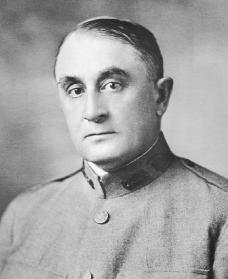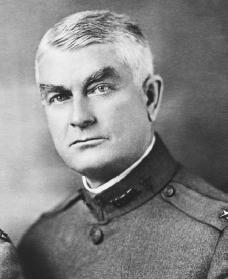Mayo Brothers Biography
Charles Mayo
July 19, 1865
Rochester, Minnesota
May 26, 1939
Chicago, Illinois
American physician
William Mayo
June 29, 1861
Le Sueur, Minnesota
July 28, 1939
Rochester, Minnesota
American physician
Brothers and outstanding surgeons (doctors who perform operations) William Mayo and Charles Mayo, along with their father William Worrall Mayo, founded the world-famous Mayo Clinic in Rochester, Minnesota, one of the nation's first efforts at group practice of medicine.
Family practice
William James Mayo was born in Le Sueur, Minnesota, on June 29, 1861. His brother, Charles Horace, was born four years later in Rochester, Minnesota, on July 19, 1865. They were two of William Worrall Mayo and Louise Abigail Wright Mayo's five children. Their father had come to the United States from England in 1845 and settled in Rochester, Minnesota, as a country doctor. William and Charles studied Latin, art, and the classics at the Rochester Training School. At home their mother taught them botany (the study of plants) and astronomy (the study of the Sun, the Moon, and the stars). Their father gave them instruction in chemistry (the study of simple substances and their physical make-up), anatomy (the study of the structure of living things), and laboratory methods. Both parents taught their children about the evils of prejudice and war and the benefits of working together.
The Mayo brothers frequently accompanied their father on professional visits, observed his diagnoses (identifications of a disease through observation of its symptoms) and methods of treatment, and helped with operations. It is no wonder that they both chose to study medicine. William graduated from the University of Michigan Medical School in 1883 and also took degrees at the New York Post-Graduate Medical School and Hospital in 1884 and at the New York Polyclinic in 1885. He joined his family in practice at Rochester, as did Charles after his 1888 graduation from the Chicago Medical School (later Northwestern University Medical School). William was quiet and reserved; Charles was lively and friendly, with a love of practical jokes. They were known as "Dr. Will" and "Dr. Charlie."
In 1889 the Sisters of Saint Francis opened Saint Mary's Hospital in Rochester

Reproduced by permission of the
Work during wartime
William Mayo was commissioned as a first lieutenant in the army medical reserve

Reproduced by permission of the
During World War I, the Mayo Clinic was very busy. There were draftees to examine and war training classes to run for new members of the medical corps. William and Charles designed courses to bring doctors up to date on the latest scientific and surgical developments. Also, before the war the United States had relied heavily on Germany for medical equipment and materials. When the German supply was cut off, American medical workers found it hard to adjust to the poorer quality of American-made medical equipment. Then, in 1918, an outbreak of the flu put extra pressure on the clinic. A hotel next door to the hospital was remodeled and used to handle the overflow of patients.
The two brothers divided their time between the Mayo Clinic and their duties in Washington so that one of them would always be in Rochester. The strain of their war service, added to the effort needed to keep the Mayo Clinic functioning, affected the health of both men. Charles contracted pneumonia (an infection in the lungs) during one of his posts in Washington, and William came down with a severe case of jaundice (a yellowing of the skin) in 1918, which kept him off duty for more than two months. In William's absence Charles filled his post in Washington, making this the first time that the brothers were both absent from the clinic for any extended period.
Postwar prejudice
After the war ended, the prejudice it had stirred up remained. For many years American medical students had taken for granted that part of their training would take place in Germany and Austria, in the classes and laboratories of the European masters of surgery and medical science. But after the war antiGerman feelings led many to question the belief that German medical knowledge was the best. German scientists and physicians were accused of stealing ideas from British and American thinkers.
While William and Charles Mayo were not very fond of the Germans, they were not willing to see such feelings translated into action against individuals. When the 1918 meeting of the American Surgical Association suggested that the German and Austrian honorary (achieving a title without having to meet the usual requirements) members be removed from the group, William strongly opposed the idea, insisting that political and military conflict should not extend into the world of science. The resolution banning the Germans and Austrians failed to pass at that session but was adopted at the next one, when William was not able to attend.
Later years
War service gave many physicians their first taste of teamwork in medical practice. Many did not like it, but increasing costs, decreasing numbers of patients, and unpaid bills led many to follow the example of the Mayo Clinic. The story of the clinic and the Mayo Foundation for Medical Education and Research made the Mayos nationally famous. The national news services printed stories such as the one about the millionaire with a superior air who, seeing William, ran up to demand, "Are you the head doctor here?" "No," William replied with a straight face, "my brother is the head doctor. I'm the belly doctor."
In 1919 William received the U.S. Distinguished Service medal, which Charles was also awarded in 1920. Both brothers continued to practice medicine and perform surgery until they were well into their sixties. William retired in 1928, and a series of strokes brought Charles's career to an end a year and a half later. They are best remembered as a team whose greatest achievement was the clinic built upon their partnership. The famed physicians who had worked together so closely died within a few months of each other in 1939—Charles Mayo on May 26 and William Mayo on July 28.
For More Information
Davis, Lucile. The Mayo Brothers: Doctors to the World. New York: Children's Press, 1998.
Habermann, Thomas M., Renee E. Ziemer, and Carolyn Stickney Beck. The Mayo Brothers' Heritage. Rochester, MN: Mayo Clinic Scientific Press, 2001.
Johnson, Spencer. The Value of Sharing: The Story of the Mayo Brothers. La Jolla, CA: Value Communications, 1978.
Starr, Paul. The Social Transformation of American Medicine. New York: Basic Books, 1982.
Comment about this article, ask questions, or add new information about this topic: